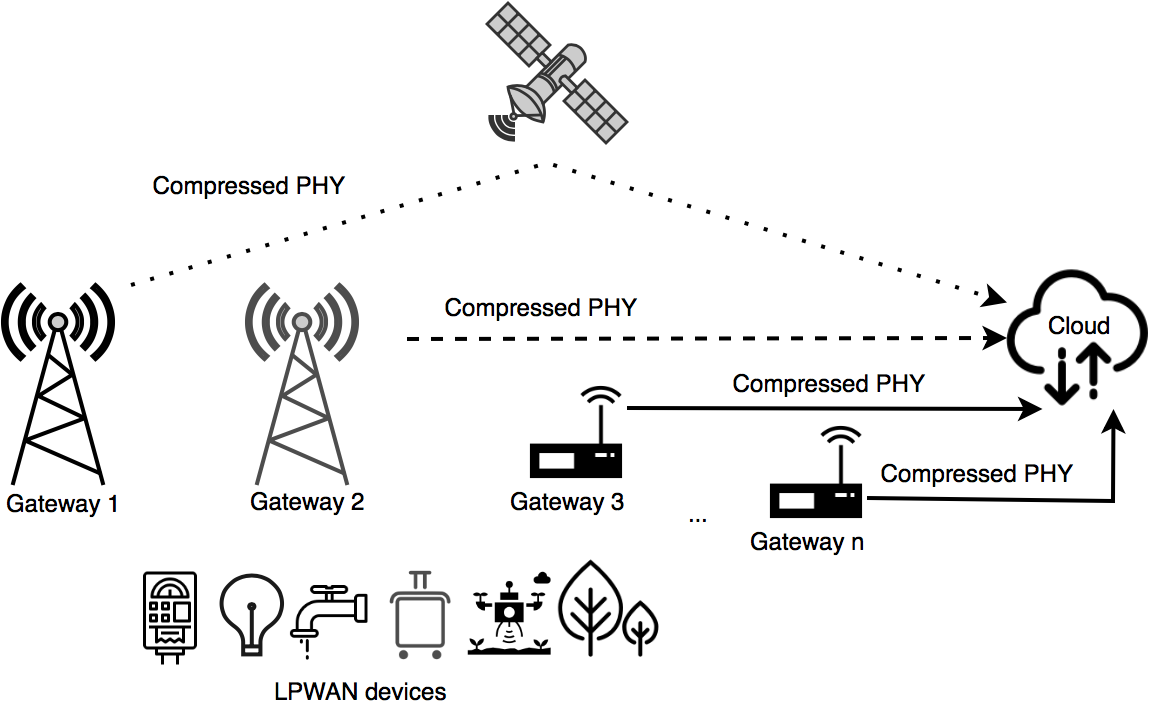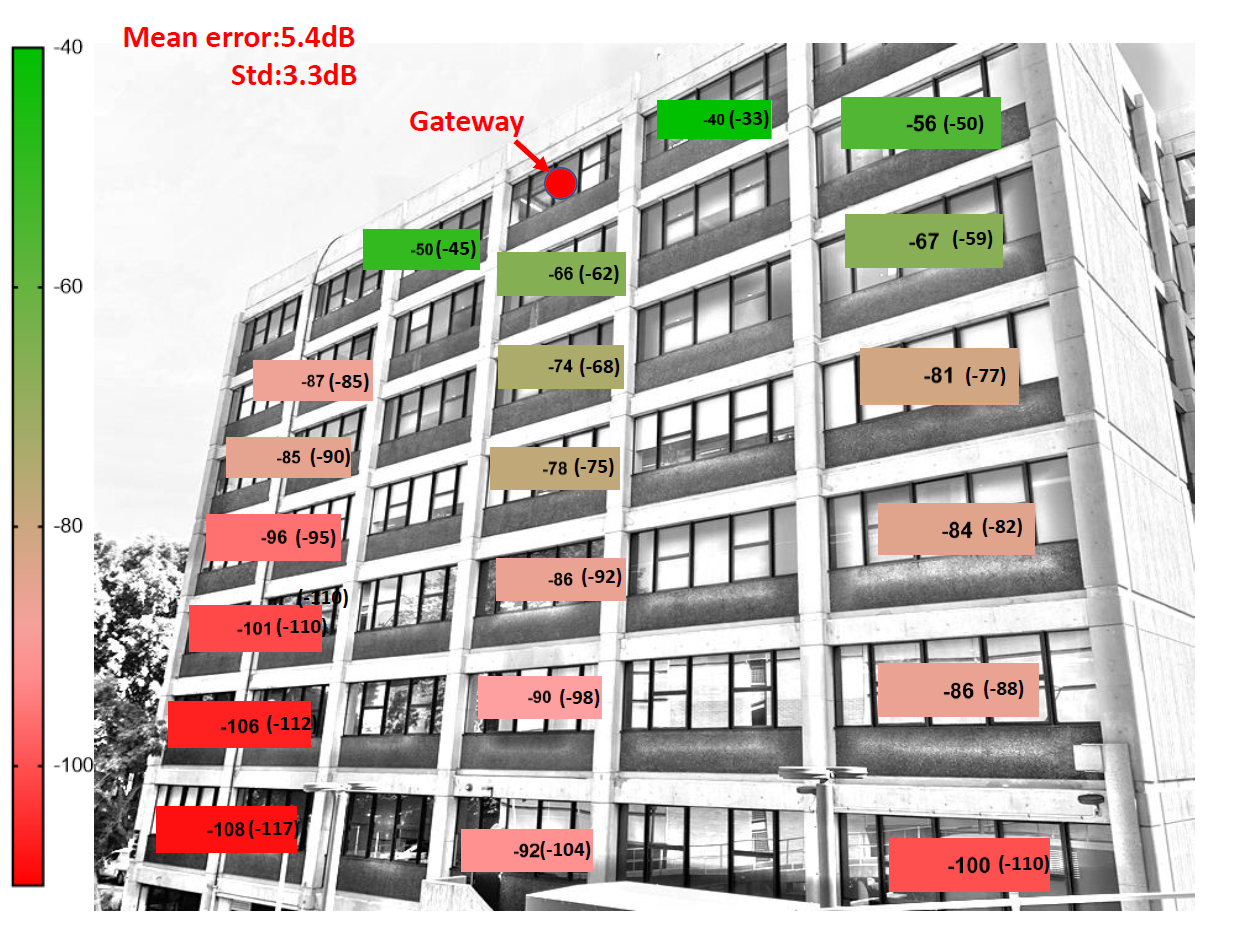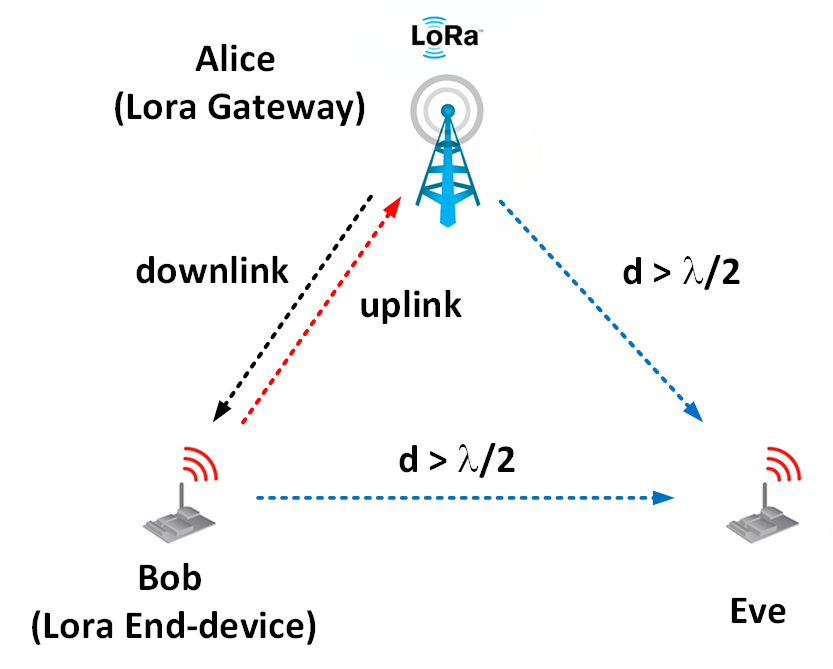Physical layer compression



We propose Nephalai, a Compressive Sensing-based Cloud Radio Access Network (C-RAN), to reduce the uplink bit rate of the physical layer (PHY) between the gateways and the cloud server for multi-channel LPWANs. Recent research shows that single-channel LPWANs suffer from scalability issues. While multiple channels improve these issues, data transmission is expensive. Furthermore, recent research has shown that jointly decoding raw physical layers that are offloaded by LPWAN gateways in the cloud can improve the signal-to-noise ratio (SNR) of week radio signals. However, when it comes to multiple channels, this approach requires high bandwidth of network infrastructure to transport a large amount of PHY samples from gateways to the cloud server, which results in network congestion and high cost due to Internet data usage.
In order to reduce the operation's bandwidth, we propose a novel LPWAN packet acquisition mechanism based on Compressive Sensing with a custom design dictionary that exploits the structure of LPWAN packets, reduces the bit rate of samples on each gateway, and demodulates PHY in the cloud with (joint) sparse approximation. Moreover, we propose an adaptive compression method that takes the Spreading Factor (SF) and SNR into account. Our empirical evaluation shows that up to 93.7% PHY samples can be reduced by Nephalai when SF = 9 and SNR is high without degradation in the packet reception rate (PRR). With four gateways, 1.7x PRR can be achieved with 87.5% PHY samples compressed, which can extend the battery lifetime of embedded IoT devices to 1.7.
Related papers
Modelling

In recent years, we have witnessed the rapid development of LoRa technology, together with extensive studies trying to understand its performance in various application settings. In contrast to measurements performed in large outdoor areas, limited number of attempts have been made to understand the characterization and performance of LoRa technology in indoor environments. In this paper, we present a comprehensive study of LoRa technology in multi-floor buildings. Specifically, we investigate the large-scale fading characteristic, temporal fading characteristic, coverage and energy consumption of LoRa technology in four different types of buildings. Moreover, we find that the energy consumption using different parameter settings can vary up to 145 times. These results indicate the importance of parameter selection and enabling LoRa adaptive data rate feature in energy-limited applications. We hope the results in this paper can help both academia and industry understand the performance of LoRa technology in multi-floor buildings to facilitate developing practical indoor applications.
Related papers
LPWAN-based smart building
There is an increasing interest in Internet of Things (IoT) enabled smart buildings over the past decades. However, the development of smart buildings is impeded by the high installation/maintenance cost and the difficulty of large scale evaluation in the wild. In this paper, we report the design, implementation, and deployment of an emergency light-based smart building solution. The key advantage of the system is that it is built on top of existing facilities in the building (i.e., emergency light). As a case study, we have implemented and deployed our system in 9 production smart buildings of different types including residential, commercial office and warehouse of multiple level building complexes. Using real data from 4 typical buildings, we show the proposed system can achieve >97% average packet delivery rate. Evaluation results also demonstrate the stability and robustness of the system to environmental changes. The results of this paper provide practical insights to facilitate the development of smart building systems.
Related papers
LPWAN security



Physical layer key generation that exploits reciprocity and randomness of wireless fading channels has attracted considerable attention in recent years. Despite much research efforts in this field, the problem of wireless key generation at long distance and low data rate remains unknown and has not been studied. In this paper, we conduct extensive experiments and analysis in real indoor and outdoor environments to explore the feasibility of wireless key generation for Long Range (LoRa)-based network. Our experimental results show that (i) the low transmission rate will lead to low channel reciprocity which makes wireless key generation significantly challenging, (ii) when the requirement of high reciprocity is fulfilled, two nodes can generate the same secret key even when they are far away from each other (a few kilometers). Building on the strengths of existing secret key extraction approaches, we present LoRa-Key, the first complete key establishment protocol for LoRa network by exploring the shared randomness extracted from measured Received Signal Strength Indicator (RSSI). LoRa-Key employs a number of signal processing techniques to improve key generation rate significantly. Moreover, we propose a novel compressive sensing based reconciliation framework to reduce mismatch rate. Experimental results show that LoRa-Key can achieve key establishment rates of 18 bit/s in stationary scenario and 31 bit/s in mobile scenario. To the best of our knowledge, this is the first work that studies key generation protocol for LoRa network.